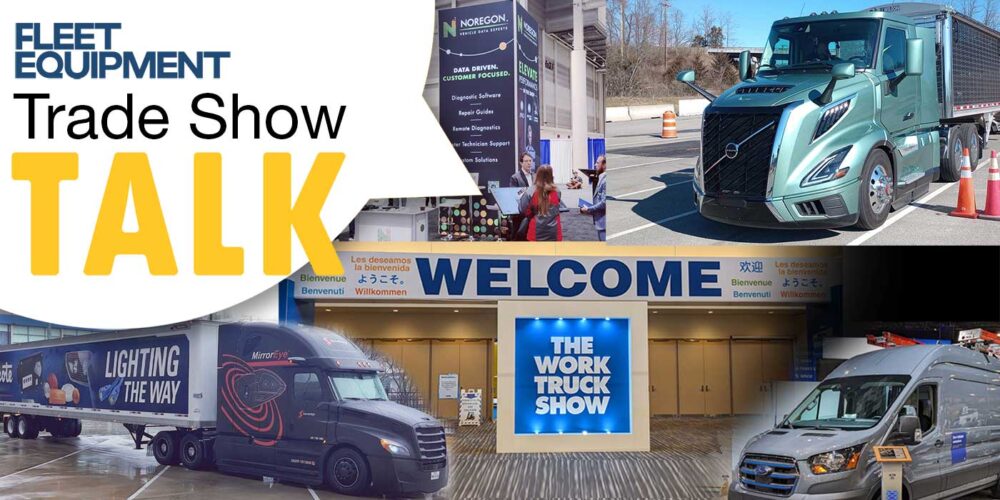
One of the biggest challenges a fleet manager faces is managing driver safety. Managing risk and improving safety across the fleet is crucial to keeping insurance premiums low, reducing downtime and preventing expensive and unnecessary maintenance costs.
The National Safety Council states that distracted driving causes more than a million collisions each year. The cost of accidents and vehicle damage can add up quickly. Just the expenses associated with repairing damaged vehicles alone are exorbitant. Add on increased insurance premiums, profits lost from driver and vehicle downtime, and potential lost business from damage to your brand reputation, and you can see the impact this can have on your fleet.
Technology continues to improve by simplifying all aspects of fleet management, including driver behavior and safety. Fleet safety management is key to keeping fleet operational costs low and productivity high.
What you can do with telematics
At this point, the majority of fleets are equipped with telematics software. Now that so many organizations have the technology, it’s time to learn how to use it properly to make the most of its potential. These solutions are complex; they can do much more than just track your vehicle. The complexity requires more knowledge of the software and fleet operations, as well as initiative to maximize results.
The use of big data is not limited to the telematics industry. Millions of data points are collected each day from across the world. The most applicable example of using predictive analytics in day-to-day life is the ability to make predictions about buyer’s activity. Websites such as Amazon use data from your previous purchases and search history to show you items that you are likely to purchase. This is all determined by predictive analytics.
So, take this example and apply it to fleet management. Imagine what you could do with all of the data collected from your fleet and back-office systems. There are thousands of pieces of information collected each day that your telematics system makes available to you. All of this presents unique insights that allow you to learn more about your fleet than ever before. The power of big data is limitless, so how will you use it to make your fleet better?
You can maximize the data from your back-office systems, and your vehicles, by applying it to your fleet management strategy.
Managing safety and risk with telematics
Applying these same practices to driver behavior can allow fleet managers everywhere to cultivate a safer and more efficient fleet. It’s about more than just numbers and pieces of information. It’s about connecting your fleet to your business. All aspects of your fleet are connected to provide better transparency and visibility into fleet activities and their potential consequences.
Unsafe driver behaviors lead to accidents, increases in insurance premiums, reputation issues and vehicle damage. Therefore, it’s important to create a strategy to improve driver behaviors across your fleet to prevent problems that could hurt your organization.
You can’t sit in the passenger seat of each vehicle, but you can stay aware of fleet activities with telematics software. All of the information collected on driver behavior by your telematics software can be used to improve fleet safety. Using the data and machine learning, the software can make predictions about future risks based on historical information.
Let’s say you have a driver who hard brakes frequently. Regardless of the cause, this behavior is likely to cause accidents, and therefore you want to correct the behavior as soon as possible. With this knowledge, you can create a customized coaching plan for this driver to help correct this habit. If this is successful you have avoided preventable accidents, driver injury, vehicle damage, and insurance premium increases.
If you don’t have the right software, or if you aren’t using it properly, you could miss out on these cost-saving opportunities. There’s more to improving driver safety than behavior monitoring and training. Take fleet safety a step further with gamification.
Why gamification works
Driver compliance is crucial to running a safe fleet. Concerns about the “Big Brother” effect with fleet monitoring technology have mostly passed, but some drivers are still skeptical knowing that their behaviors are monitored. The solution to this is to get drivers involved and show them how the technology works and can benefit them. The easiest way to do this is with gamification.
Gamification incentivizes the drivers to improve their behaviors on the road. By keeping score of their good and bad behaviors and comparing those numbers to their peers. This, combined with driver coaching and training, has proven to drastically improve fleet safety.
Gamification motivates the drivers to work to improve their behaviors by pinning them against other drivers, inciting competition across the fleet. It also puts their actions on display for the entire fleet. Even without detailing their specific mistakes, showing each driver’s numbers publicly motivates them to improve. Tapping into that psychology allows fleet managers to gain driver buy-in to promote safer practices.
Making changes to improve safety
Without vehicle damage, downtime, accidents and violations, your organization can save thousands of dollars each year. Additionally, avoiding downtime and keeping productivity high can result in higher profits.
The ROI of a telematics solution is generally seen within six months. By harnessing the power of big data and analytics a fleet can save on insurance.
Changes in driver behavior will benefit a fleet enormously. Combine the power of driver behavior monitoring, predictive analytics, and gamification to see drastic improvements in fleet operations.
Morgan Casper is a social media and corporate communications specialist at Vehicle Tracking Solutions.













